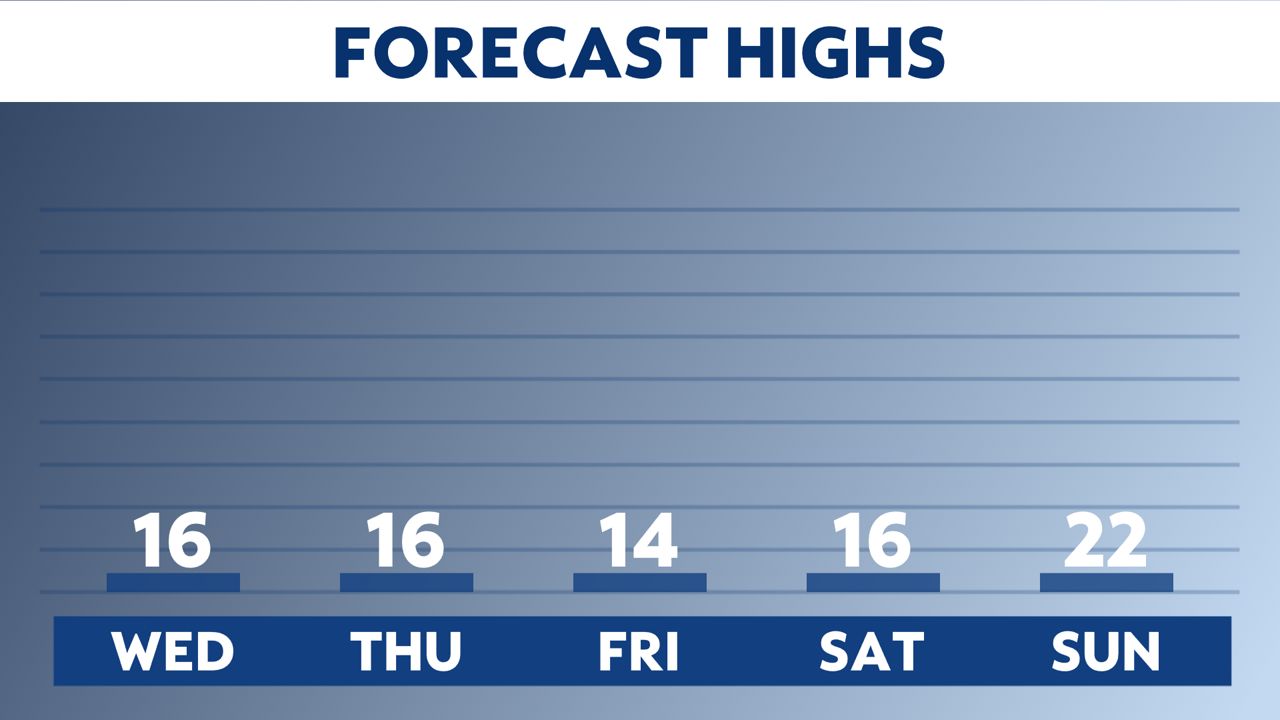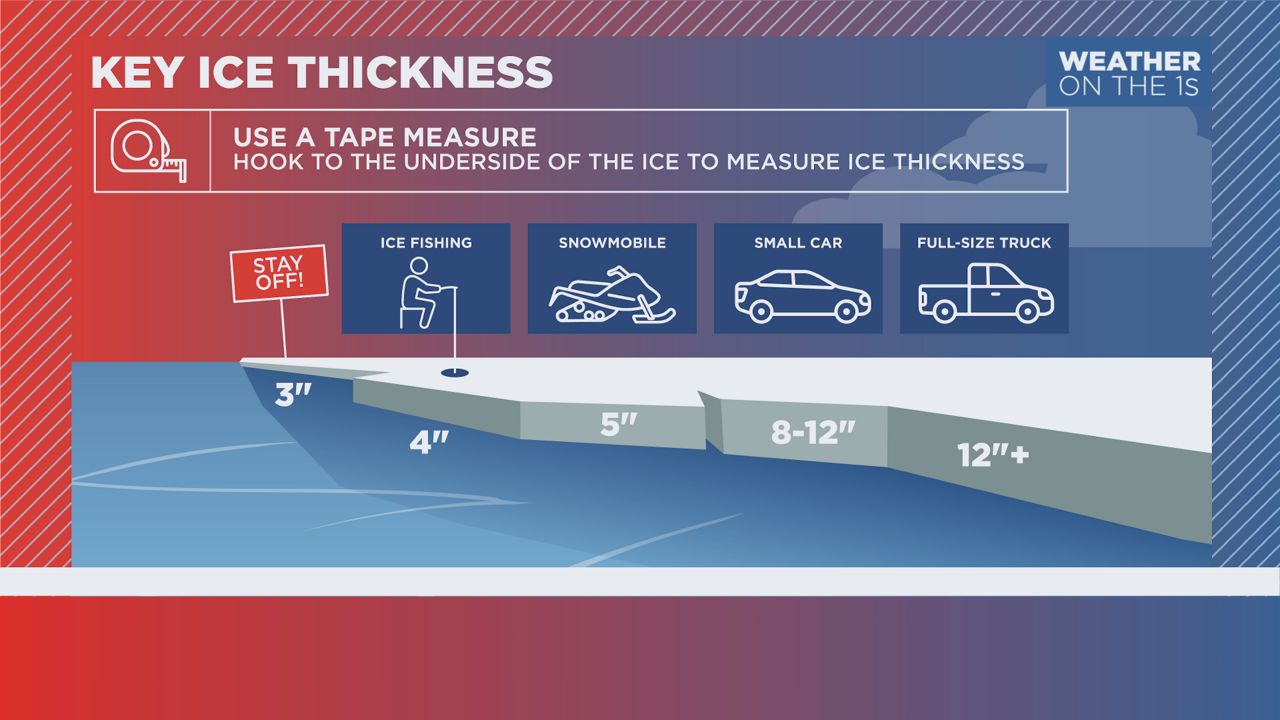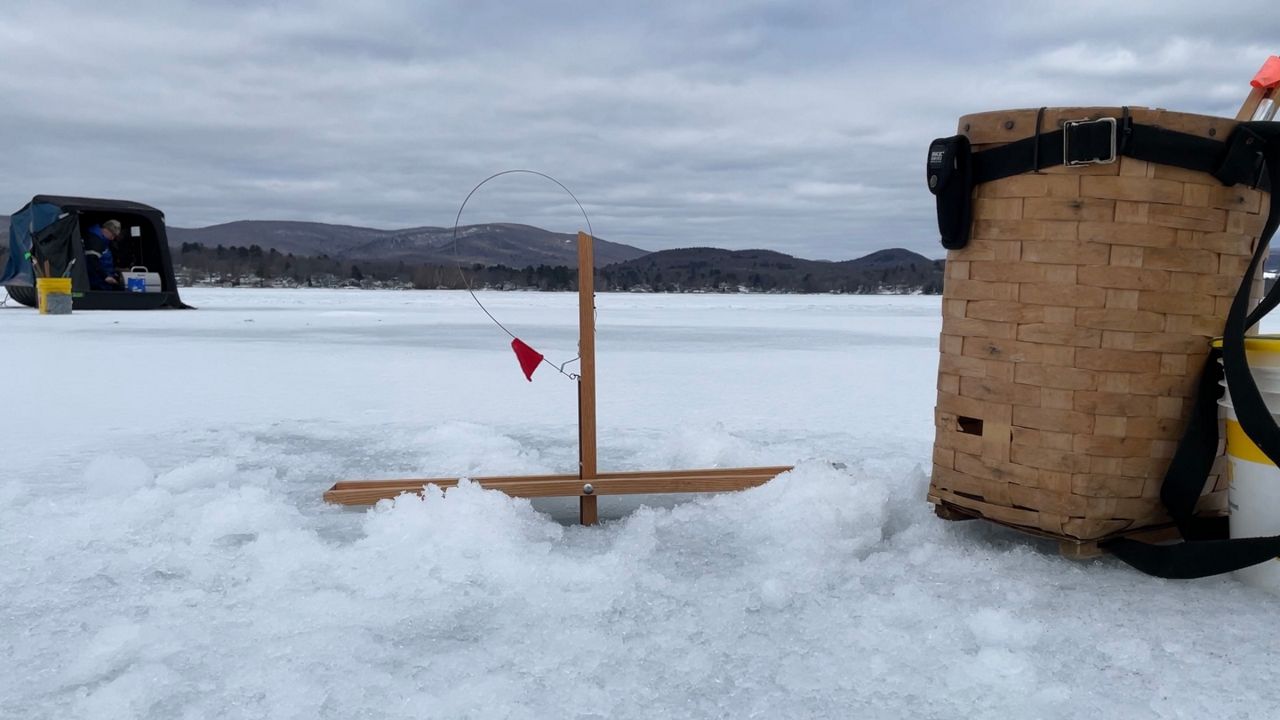Whether you're walking, driving or fishing on a frozen lake, it's critical to know the ice depth first before venturing out.
Always drill a hole to measure ice thickness. If you don't have an auger, talk to a local fishing expert who is familiar with the lake.
Each lake is different. While some lakes have stronger currents, others could have natural springs. Each can affect ice depth differently.

This winter has been a bit abnormal- we started the season off very mild with minimal snow.
For some parts of the state, December 2023 was the mildest on record. As a result, many of the state's lakes remained open and never froze. Typically, subfreezing temperatures in December create that base layer of ice before the snow falls.
We even entered January extremely mild, with above-average temperatures. We truly didn't see great ice creation until this past week.

Now that the temperatures have plunged, we're getting some decent reports of ice formation on the local lakes.
Lake Winnebago now has 6 inches of ice, with lakes in northern Wisconsin ranging between 5 to 7 inches of ice. Although ice levels still remain dangerous in the state's southern lakes, where only a thin layer is resting on top of the water.
According to the Ashton Ice Growth Prediction Method, "an ice sheet will grow at a rate of roughly 1 inch per 15 freezing degree days (FDD)". A FDD is the average number of degrees below freezing over 24 hours.
Don't worry about the average, as we've been sitting well below 15 degrees since Saturday. Most lakes have seen an increase of 4 inches or more over the past week.
Moving forward, the ice will continue to get thicker as temperatures stay well below freezing through the weekend. Most lakes and ponds will see an additional increase of 5 to 6 inches of ice by Sunday.

Remember to always practice safety first when on an icy lake. Generally speaking, you need at least 4 inches of ice to walk on it. Yet, you'll need 8 inches of ice or more to drive a car or small truck safely on it.

Looking ahead, be cautious if you have some ice fishing jamboree plans later this month. The Climate Prediction Center expects well above normal temperatures by the end of January, which will likely sit above freezing.
Our team of meteorologists dives deep into the science of weather and breaks down timely weather data and information. To view more weather and climate stories, check out our weather blogs section.



